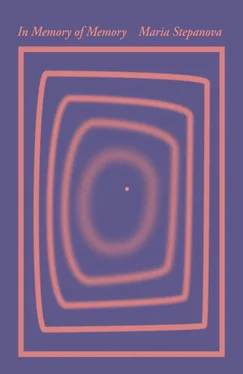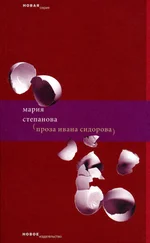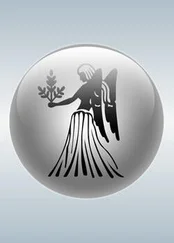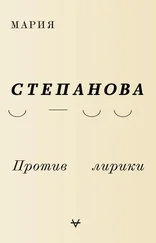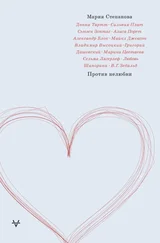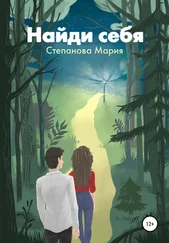About a week later my colleague from Saratov rang me sheepishly. He’d mixed up the address. That street all right, but a different house. God, I’m so sorry, Masha.
And that is just about everything I know about memory.
3. A Handful of Photographs
1.
A large hospital ward with a black-and-white checkered floor. The sun beats down through the tall arched windows and the right-hand side of the picture is bleached white by the light. There is altogether plenty of white in the picture; the beds stand feet-forward, their metal frames covered in canvas and on them high-stacked pillows, the heads of the patients. Men with whiskers stare toward the camera, one has propped himself up on his elbow and a nurse is making a quick adjustment to something at his shoulder. Only one woman in the whole huge room. In the left-hand corner of the picture a swarthy man in a hospital gown sits by a table, leaning on crutches, his face creased into a toothy beaming smile. This table is covered with paper, doctor’s notes, discharge papers. Two men are sitting at the table, radiating the untroubled contentment of the hospital visitor — they are the focus of the composition, the event, the reason for the photographer’s visit. One sits back in his bentwood chair; he wears a black suit, his shoes shine, his collar is brilliant white. The other wears gray and a flash of starched collar beneath his transparent mustache. A row of auxiliaries stand farther back, their arms crossed over their chests and stomachs, as if waiting for orders. The iron bed legs and the ribs of columns run in parallel; someone peeps out from behind a column as if everyone is obliged to be present in this picture. The fronds of an institutional potted palm wave from a corner. The window is a pool of light, and the picture is most interesting where the light washes out the detail of the window frame and even eats away at the nurse and her patient.
2.
If you didn’t know you might never guess that this is a body. It looks like a pile of rags on a low marble table, and some attentive students sit behind it. Anatomy class. Closer to the camera there’s another little table with something indistinct on it, a sack or a bundle or some such, I can’t quite make it out. Six women crowd around the table, white lab coats over their dark everyday dresses. The only man stands a little apart, he has turned away and is deciding whether to smile or frown while the others are occupied. He wears a comic pince-nez, behind him a school blackboard covered in chalk scrawlings, and if you look closely you can see a mass of information: a diagram of the vegetative nervous system left on the board after a lecture; the profile of a soldier in a high peaked cap; another profile of a beautiful woman with a cigarette in her mouth and a determined jaw; a smiling round face, presented straight on with a huge pair of ears added on each side. The blackboard is to the side of the picture, and at the table we see a restaging of Rembrandt’s The Anatomy Lesson of Dr. Nicolaes Tulp but with an all-female cast: a black-haired girl with a stethoscope around her neck is reading from a book and her listeners are sitting absolutely still. Their faces are as impassive as the faces of watchmen on duty, only one has allowed a smile to soften her features. But if you thought at first that they were all listening attentively then you would have been wrong: one is stretched out on her chair and her gaze is remote, another is sitting up with a sudden start as if her name had been called. One student in glasses hasn’t managed to put on her doctor’s coat, and is attempting to pass off her heavy embroidered bodice as a medical robe. The woman sitting with a book, her hair gathered into a bun at the nape of her neck, is my great-grandmother, Sarra. The women direct their gazes in different directions, like a bundle of badly behaved twigs, anywhere except at the articulated pile of rags that is the corpse in front of them.
3.
All the French doctors are whiskered and their whiskers point skyward like wings; all the women are in white with their sleeves pushed up; an electric light hangs down from the ceiling. You can tell the nurses from the students by the huge cornettes they wear. Constant collective activity like a spindle turning, faces peeking out from behind backs, glances over the shoulder at a point in the picture where there is a mound under sheets, and the gray-bearded head doctor is holding a clamp or a lancet: this is the dead zone, the static center of the composition and the operation, so silent you can hear the ticking in your own head, and the women, who are standing so close to the hands and what is under them, are turned away to look at the camera, and seem to be frowning.
4.
The picture is the color of wood, and even seems to be wood-paneled, everything in it is planked, the walls, the fence, the shed, a little lean-to at the side of the house. There’s a cat nearby, but the chickens are maintaining their dignity. A girl, wearing a new school dress, you can tell that the wide sleeves are newly stitched. Her whole being says that she is resigned to being photographed but doesn’t quite see the need. A bentwood chair has been brought outside for the occasion and she is seated in it and the camera readied, and there she is, her smile both proud and ironic.
5.
There’s no note on this one, but it’s Switzerland, around 1910. Wedges of pine forest to the left and right and cone-shaped white mountains in the gap between. A few pine trees are visible, higher up in the whiteness, a couple of different-sized trees on the edges of the plantations, and beyond them the regular spikes of saplings growing under the trees. Above, the indistinct Alpine cloudscape, and just below the top edge of the picture a fringe of greenery, from which we , Russian travelers, have only just emerged.
6.
A little photograph, old, and it looks even older than it is, because it’s so faded. On the lower edge, printed in pink: Cherson and B. Wineert. It looks like the mid-1870s, a bride stands, immovable as an upturned cup on a tablecloth, her wedding dress falls in a triangle of thick material around her, a cliff of fabric descending from her stomach to the ground, buttons all aligned. Her wide face is fringed by lace. She stands, calm and steadfast, and beside her the groom seems barely to exist, leaning against her, as he might against a gate. Not unequal in the crude and obvious sense of an unequal marriage, but almost as if they presented to us the union of a triangle and an exclamation mark. He is thin-faced, long-boned, like a taper, or the last splinter of soap, and stretched to attenuation, even appears to be growing still in his frock coat with its lapels drawn on, his wife holding on to his elbow. The frock coat is almost too straight, the top hat unexpected, like a rabbit in a conjurer’s hand. My great-great-grandfather’s particular beauty seems so ephemeral that it’s hard to imagine him twenty or thirty years later, an established man, a paterfamilias . As a child I used to think that the other great-great-grandfather with his bushy beard was the same man, except much older, and the difference between them horrified me. But there are only two photos of Leonty Liberman, and in both he looks the same: as if he might disappear into the background before he even reached adulthood.
7.
Children are playing croquet on a lawn in a Moscow suburb. The adults are sitting on a bench, or standing, leaning against a tall pine. An old timbered dacha with a mansard roof and little onion domes continues out of the frame. The windows are wide open. The game has been broken off and everyone there has turned to face the photographer: little girls in knee-high socks and white dresses that are short like little smocks; barefooted little boys from next door’s dacha; the croquet mallets are still, the balls lie motionless. Only the girl on the right is still intent on the game, she is bent over and her bare shoulders are crookedly but determinedly curled over the mallet, her right foot is extended, her face in profile. Her pageboy haircut exposes her long, soft neck. She looks like an ancient Greek boy, she radiates a dark concentration and is entirely focused inwardly, in the emblematic manner of a bas-relief. All the others stand and sit in little groups and pairs, but she is alone in the foreground. She is not far from the others, but all the same she seems to be at the edge of the photograph, like the far wing of a large house.
Читать дальше
